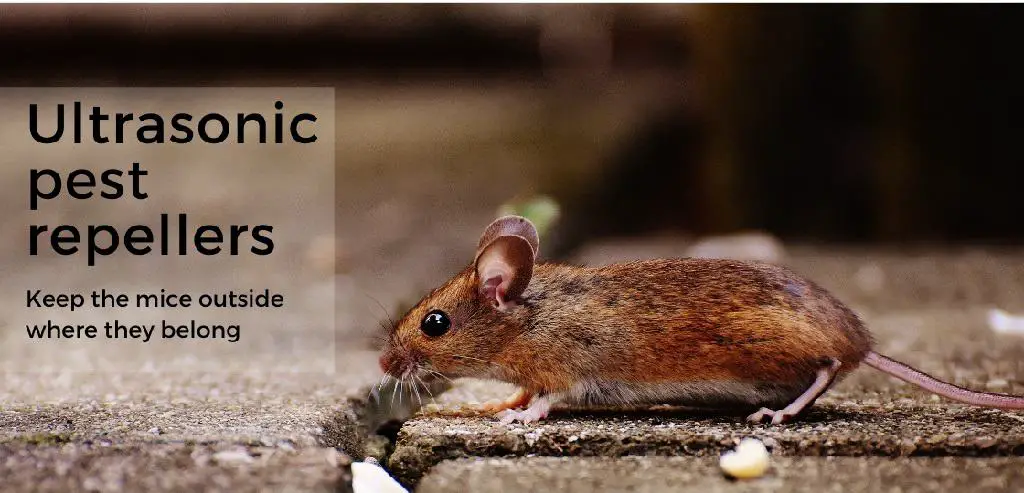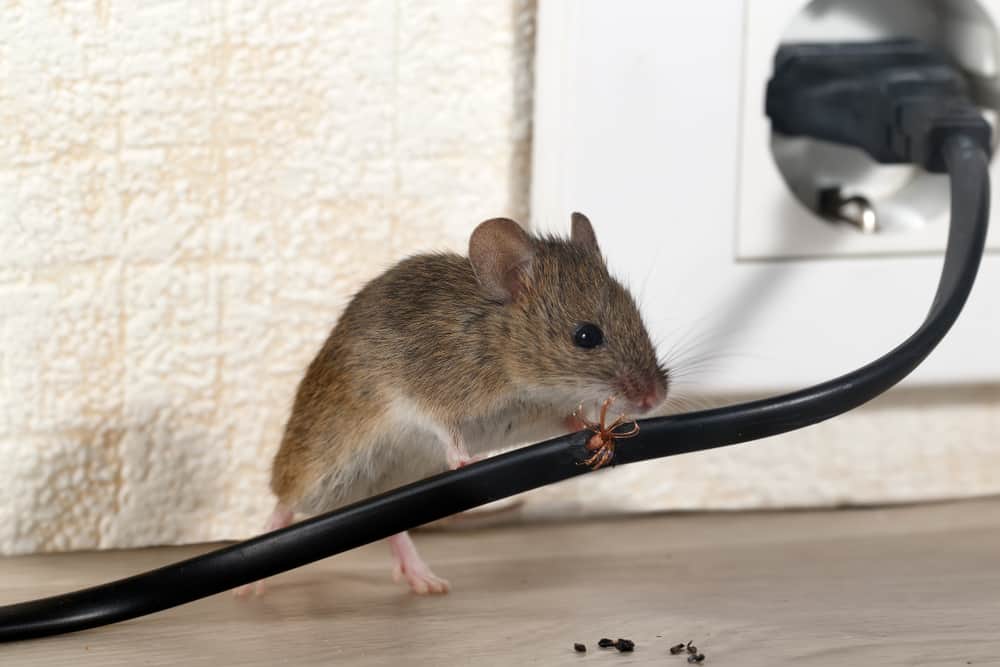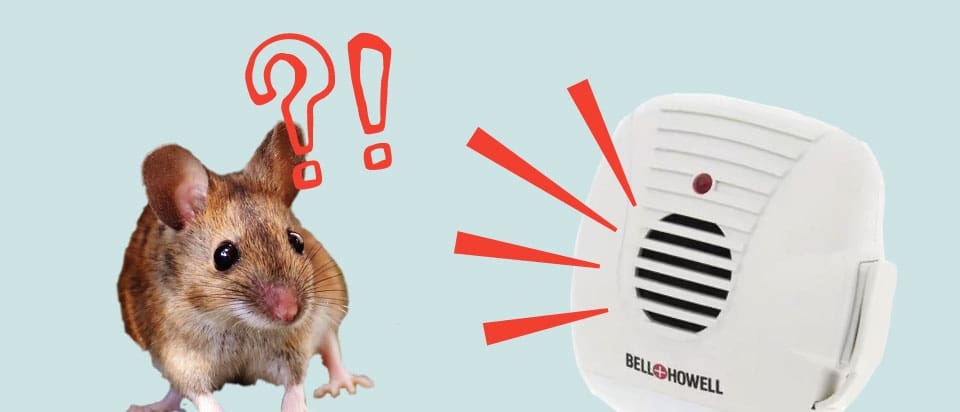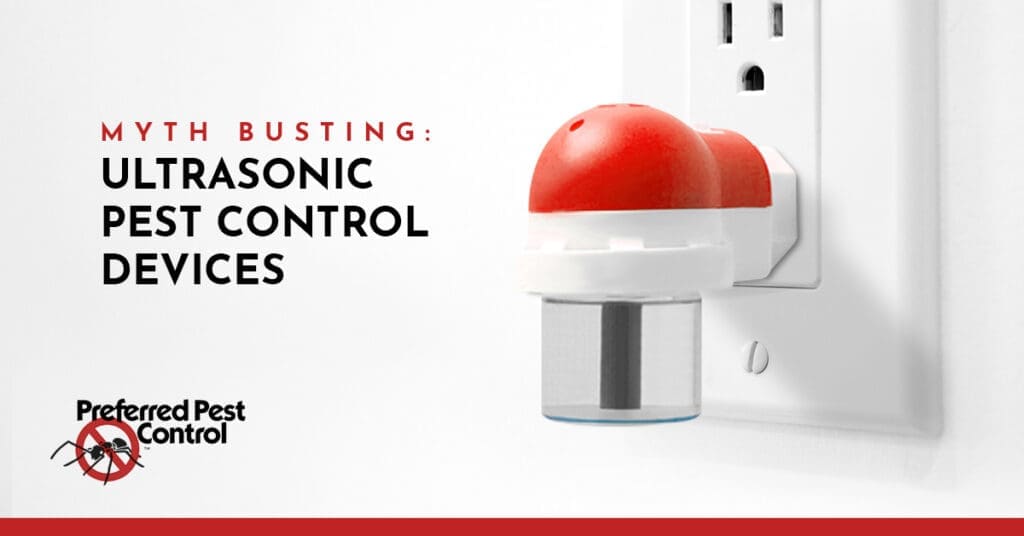Imagine a world where pests scurry away at the mere sound of a tiny device. It sounds like a dream come true for those struggling with unwanted critters in their homes. But do ultrasonic pest repellents really live up to their promise? In this article, we explore the allure of these devices and take a closer look at whether they actually work. So, if you’re tired of battling pests and curious about this buzzing trend, keep reading to find out the truth behind ultrasonic pest repellents.
What are Ultrasonic Pest Repellents?
Ultrasonic pest repellents are electronic devices designed to repel various pests using ultrasonic sound waves. Unlike traditional pest control methods that rely on chemicals or physical traps, ultrasonic pest repellents claim to deter pests by emitting high-frequency sound waves that are inaudible to humans but unbearable for pests.
Understanding the technology
The technology behind ultrasonic pest repellents is based on the theory that certain frequencies of sound can be used to disrupt and deter pests. These devices emit sound waves typically in the range of 20,000 to 50,000 Hz, which is well beyond the range of human hearing. The idea is that these high-frequency sound waves create a hostile environment for pests, making them uncomfortable and driving them away.
How do they work?
ultrasonic pest repellents work by emitting high-frequency sound waves that are designed to irritate and repel pests. The sound waves are believed to disrupt the nervous system of pests, causing them discomfort and making them want to avoid the area. However, it is important to note that different pests may have different sensitivities to ultrasonic sounds, so the effectiveness of these devices can vary depending on the specific pest being targeted.
Types of ultrasonic pest repellents
There are various types of ultrasonic pest repellents available in the market. Some come in the form of standalone devices that can be plugged into electrical outlets, while others can be integrated into other devices such as air purifiers or night lights. Additionally, there are also portable ultrasonic pest repellents that run on batteries, allowing for flexibility in usage.
The Claims of Ultrasonic Pest Repellents
Repelling a wide range of pests
One of the major claims made by manufacturers of ultrasonic pest repellents is that these devices can effectively repel a wide range of pests, including rodents, insects, spiders, and even bats. The sound waves emitted by these devices are said to create an unpleasant environment for pests, discouraging them from inhabiting the treated area. However, it is important to note that the effectiveness of ultrasonic pest repellents may vary depending on the specific pest species and the severity of the infestation.
Safe and eco-friendly solution
Ultrasonic pest repellents are often marketed as a safe and eco-friendly alternative to traditional pest control methods. Unlike chemical-based pesticides, these devices do not rely on harmful toxins or chemicals to repel pests. Instead, they use non-toxic sound waves to deter pests, making them a potentially safer option for households with children and pets. Additionally, the use of ultrasonic pest repellents may also contribute to reducing the overall environmental impact of pest control efforts.
Easy to use and install
One of the advantages of ultrasonic pest repellents is their ease of use and installation. Most devices are designed to be plug-and-play, requiring no complicated setup or installation processes. Users simply need to plug the device into an electrical outlet and the ultrasonic sound waves will start emitting, creating a deterrent effect for pests. This user-friendly nature makes ultrasonic pest repellents a convenient option for those seeking a hassle-free pest control solution.
Long-lasting effects
Manufacturers of ultrasonic pest repellents often claim that these devices have long-lasting effects, even after they are turned off. The idea is that the pests will become conditioned to avoid the treated areas due to their previous unpleasant experiences with the ultrasonic sound waves. While the longevity of this conditioning effect may vary depending on the specific pest and the environmental conditions, some users have reported prolonged effects even after discontinuing the use of ultrasonic pest repellents.

Examining the Evidence
Scientific studies on effectiveness
There is a mixed body of scientific research regarding the effectiveness of ultrasonic pest repellents. Some studies have shown positive results, suggesting that ultrasonic sound waves can indeed be effective in repelling certain pests. For example, a study published in the Journal of Economic Entomology found that ultrasonic devices were effective in reducing the infestation of German cockroaches in laboratory settings.
However, it is important to note that not all studies have reached the same conclusion. Some studies have found no significant effect of ultrasonic pest repellents on pest behavior or population reduction. The efficacy of these devices may vary depending on factors such as the species of pests, environmental conditions, and specific device characteristics. Further research is needed to fully understand the effectiveness of ultrasonic pest repellents.
Mixed reviews from users
While scientific studies provide some insights into the effectiveness of ultrasonic pest repellents, it is also important to consider the experiences and opinions of users. Online reviews and customer feedback on ultrasonic pest repellents are mixed, with some users reporting positive results and others expressing skepticism and disappointment.
Some users claim to have successfully repelled pests using ultrasonic devices, citing reduced sightings and infestations. Others, however, have reported no noticeable effects or even increased pest activity after using these devices. The varying experiences of users highlight the potential variability in the effectiveness of ultrasonic pest repellents.
Limitations and drawbacks
Despite the claims and potential benefits of ultrasonic pest repellents, there are some limitations and drawbacks to consider. First, the effectiveness of these devices can be influenced by factors such as the layout of the space, presence of obstacles, and proximity to the pests’ food sources or nesting areas. In some cases, pests may simply become accustomed to the ultrasonic sound waves over time, rendering the devices ineffective.
Additionally, ultrasonic pest repellents may have limited penetration capabilities, meaning that they may not effectively cover large areas or reach pests hiding in walls or other inaccessible places. It is also worth noting that some pests, such as ants or bedbugs, may not be as affected by ultrasonic sound waves due to their biology or behavior.
Comparing Ultrasonic Pest Repellents with Other Pest Control Methods
Chemical-based repellents
Chemical-based repellents, such as insecticides and pesticides, are a common alternative to ultrasonic pest repellents. These products work by using toxic chemicals to kill or repel pests. While chemical-based repellents can be effective in eliminating pests, they come with potential health risks and environmental concerns. The use of these chemicals may expose humans and pets to harmful toxins, and their effects on beneficial insects and the ecosystem can be harmful as well.
Traps and baits
Traps and baits are another popular method of pest control. These devices are designed to lure pests into a trap or consume a poisonous bait, leading to their removal or death. Traps and baits can be effective in controlling certain pests, especially rodents and insects. However, they may require regular maintenance and monitoring, and the disposal of trapped or dead pests can be unpleasant and unhygienic.
Electronic pest control devices
In addition to ultrasonic pest repellents, there are other electronic pest control devices available in the market. These devices use various technologies, such as electromagnetic waves or vibrations, to repel or deter pests. Similar to ultrasonic pest repellents, the effectiveness of electronic pest control devices can vary depending on the specific pest species and environmental conditions. It is important to carefully evaluate and compare the features and claims of different electronic pest control devices before making a purchase.

Factors to Consider When Choosing an Ultrasonic Pest Repellent
Coverage area
When choosing an ultrasonic pest repellent, it is important to consider the coverage area of the device. Different devices have varying effective ranges, and it is essential to select a device that can cover the desired area to ensure maximum effectiveness. Some devices are designed for smaller indoor spaces, while others may have a wider range suitable for larger rooms or even outdoor use.
Frequency range
The frequency range of the ultrasonic sound waves emitted by the device is another factor to consider. While most devices emit sound waves in the range of 20,000 to 50,000 Hz, some may have adjustable frequency settings or multiple frequency modes. It is recommended to choose a device that covers a range of frequencies to increase the chances of repelling various types of pests.
Power source and energy consumption
Ultrasonic pest repellents can be powered by electricity or batteries. Devices that plug into electrical outlets may provide a continuous and reliable power source, but they may also limit the flexibility of placement. Battery-powered devices, on the other hand, offer portability and ease of placement but may require frequent battery replacements.
It is also important to consider the energy consumption of the ultrasonic pest repellent, especially if the device is constantly plugged in. Choosing an energy-efficient device can help reduce electricity costs and environmental impact.
Additional features and settings
Some ultrasonic pest repellents come with additional features and settings that can enhance their effectiveness. These features may include variable frequency modes, timed operation settings, or even additional pest control functionalities such as LED lights or air purifiers. Assessing these additional features and settings can help determine which device offers the most comprehensive pest control solution.
Addressing Common Misconceptions
Ultrasonic pest repellents and pets
One common misconception about ultrasonic pest repellents is that they may harm or cause distress to pets such as cats and dogs. It is important to note that most ultrasonic pest repellents are designed to target pests specifically, and the frequencies emitted are typically outside the range of hearing for common household pets. However, if users have concerns about the potential effects of ultrasonic devices on their pets, it is advisable to consult with a veterinarian or follow the manufacturer’s guidelines for safe usage.
Effectiveness on all types of pests
While ultrasonic pest repellents claim to repel a wide range of pests, it is important to note that not all pests may be equally affected by the ultrasonic sound waves. The ability of pests to perceive and be affected by ultrasonic frequencies can vary depending on their biology, behavior, and sensory capabilities. Certain pests, such as rodents and insects, may be more susceptible to ultrasonic sound waves, while others, such as ants or bedbugs, may be less affected.
Permanent solution or temporary fix
Ultrasonic pest repellents are often marketed as a long-lasting solution for pest control. While these devices may provide temporary relief from pest infestations, it is important to understand that they may not completely eliminate or prevent pests in the long-term. The effectiveness of ultrasonic pest repellents can be influenced by factors such as the severity of the infestation, the persistence of pests, and the specific device characteristics. To achieve optimal results, it is often recommended to use ultrasonic pest repellents in conjunction with other pest control methods or as part of an integrated pest management approach.

Real-Life Case Studies
Success stories from users
Many users have reported successful experiences with ultrasonic pest repellents, citing reduced pest activity and improved living conditions. Some users have found these devices to be effective in deterring rodents, ants, and other insects, resulting in decreased infestations and fewer sightings of pests. These success stories highlight the potential benefits of ultrasonic pest repellents for certain pest control scenarios.
Failure experiences and lessons learned
On the other hand, there are also users who have not experienced the desired results with ultrasonic pest repellents. Some users have reported no noticeable effects on pest behavior or infestation levels, while others have even observed increased pest activity after using these devices. These failure experiences serve as a reminder that the effectiveness of ultrasonic pest repellents can vary and may not always meet the expectations of every user.
Tips for Optimal Use of Ultrasonic Pest Repellents
Proper placement and positioning
The proper placement and positioning of ultrasonic pest repellents can significantly impact their effectiveness. It is recommended to place the devices in areas where pests are likely to frequent or where infestations are concentrated. For example, in the case of rodents, placing the devices near entry points or along their regular paths can increase the chances of repelling them effectively. Additionally, it is important to avoid obstructing the path of the ultrasonic sound waves with furniture or other objects to ensure maximum coverage.
Maintenance and cleaning
Regular maintenance and cleaning of ultrasonic pest repellents can help ensure their optimal performance. Dust, dirt, or debris accumulation on the device may interfere with the emission of sound waves, reducing their effectiveness. It is advisable to follow the manufacturer’s instructions for cleaning and maintenance, which may include periodic wiping or vacuuming of the devices.
Using in conjunction with other pest control methods
To maximize the effectiveness of ultrasonic pest repellents, it is often recommended to use them in conjunction with other pest control methods. Integrated pest management approaches that combine various strategies, such as the use of traps or baits alongside ultrasonic devices, can provide a more comprehensive and targeted solution for pest control. It is important to assess the specific pest situation and consider a multi-pronged approach for long-term and effective pest management.

Product Reviews: Top Ultrasonic Pest Repellents in the Market
Product A: Description, features, and customer reviews
Product A is a popular ultrasonic pest repellent that offers a wide coverage area of up to 1,200 square feet. It emits ultrasonic sound waves in a frequency range of 20,000 to 45,000 Hz, targeting a variety of pests including rodents, insects, and spiders. The device is designed for easy plug-and-play operation and offers additional features such as adjustable frequency modes and a built-in night light. Customer reviews for Product A have been mostly positive, with users praising its effectiveness in reducing pest activity and its convenient features.
Product B: Description, features, and customer reviews
Product B is a portable ultrasonic pest repellent that operates on battery power, making it suitable for both indoor and outdoor use. It utilizes a frequency range of 25,000 to 50,000 Hz and claims to repel a wide range of pests, including mosquitoes, ants, and bats. The device features a compact design and an adjustable frequency mode. Customer reviews for Product B have been mixed, with some users reporting success in repelling pests and others expressing less satisfaction with its effectiveness.
Product C: Description, features, and customer reviews
Product C is an ultrasonic pest repellent that integrates with air purifying technology. It offers a coverage area of up to 850 square feet and emits ultrasonic sound waves in a frequency range of 18,000 to 65,000 Hz. In addition to repelling pests, the device also features a HEPA filter for air purification. Customer reviews for Product C have been largely positive, with users praising its dual functionality and noting a decrease in pest activity and improved air quality.
Conclusion
Ultrasonic pest repellents offer a potentially safe and eco-friendly alternative to traditional pest control methods. While the effectiveness of these devices may vary depending on the specific pest species and environmental conditions, they have been reported to successfully repel certain pests in some cases. It is important to carefully consider the claims, limitations, and user experiences when choosing and utilizing ultrasonic pest repellents.
By combining ultrasonic pest repellents with other pest control strategies, such as traps or baits, a more comprehensive approach can be taken to address pest infestations. Furthermore, proper placement, maintenance, and use in conjunction with other pest control methods can enhance the effectiveness of these devices.
When selecting an ultrasonic pest repellent, factors such as coverage area, frequency range, power source, energy consumption, and additional features should be taken into consideration. Reading product reviews and learning from real-life case studies can provide valuable insights into the potential benefits and limitations of specific devices.
Ultimately, while ultrasonic pest repellents may not provide a permanent solution to pest infestations, they can be a valuable component of a holistic pest control approach.


I am Randy, the author behind PestControld.com. Drawing from decades of experience, I aim to provide valuable insights, expert advice, and practical recommendations to help you make informed decisions when assessing viable pest control solutions.